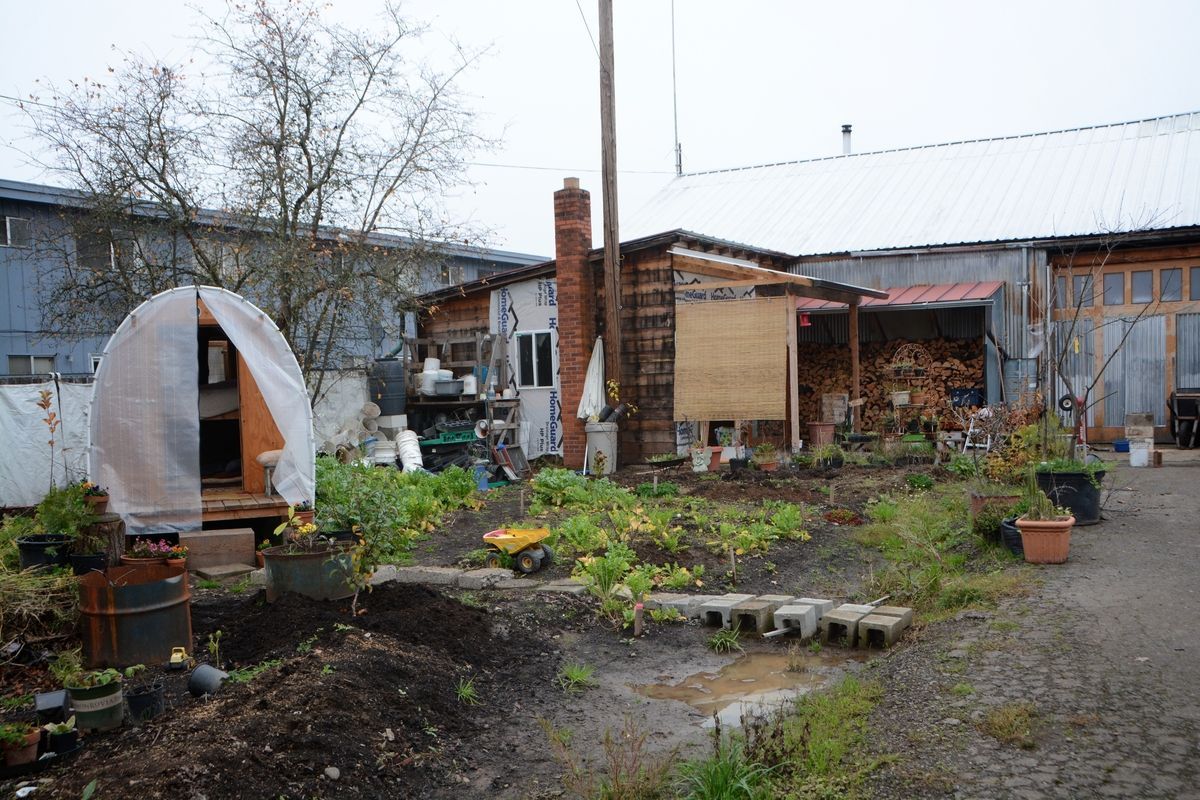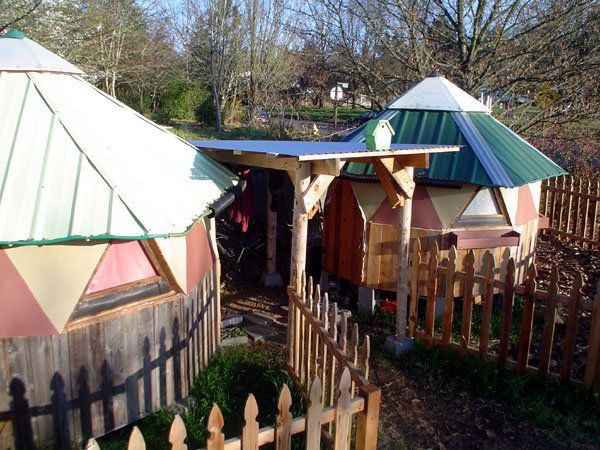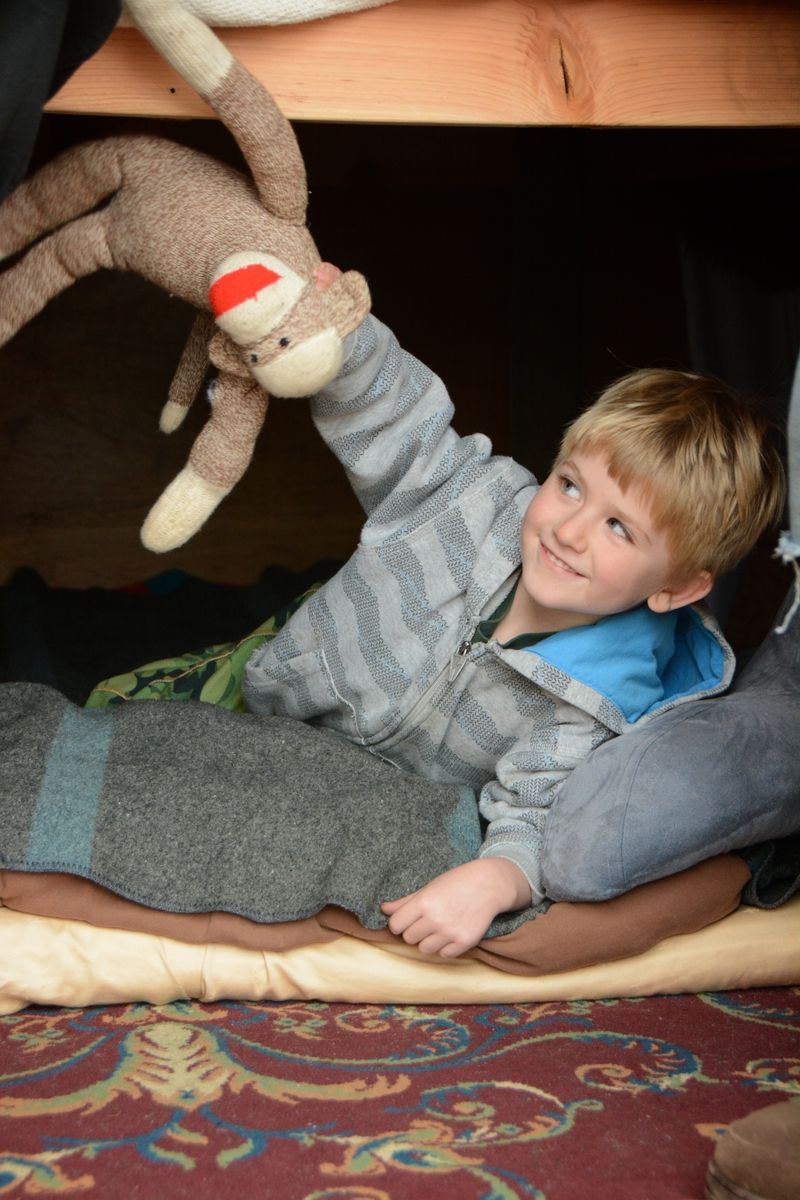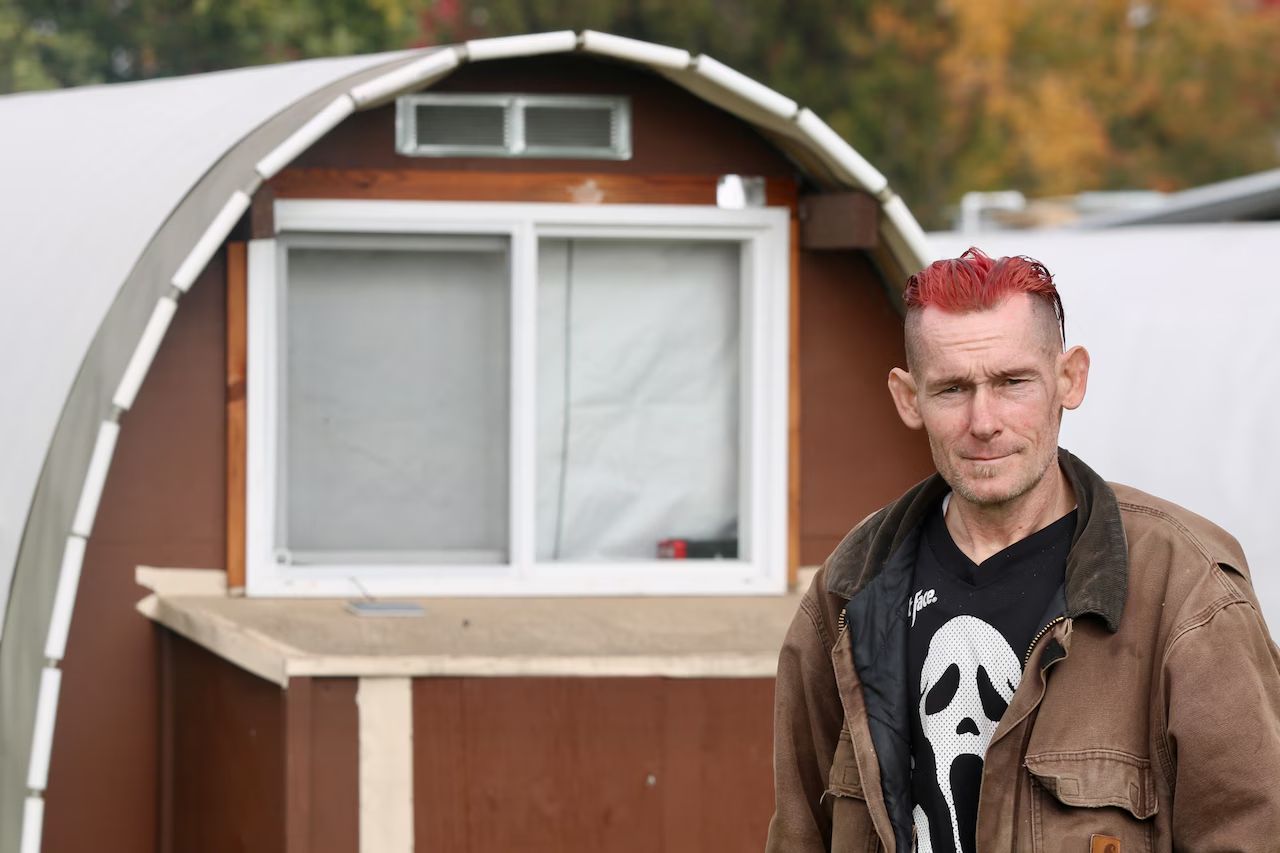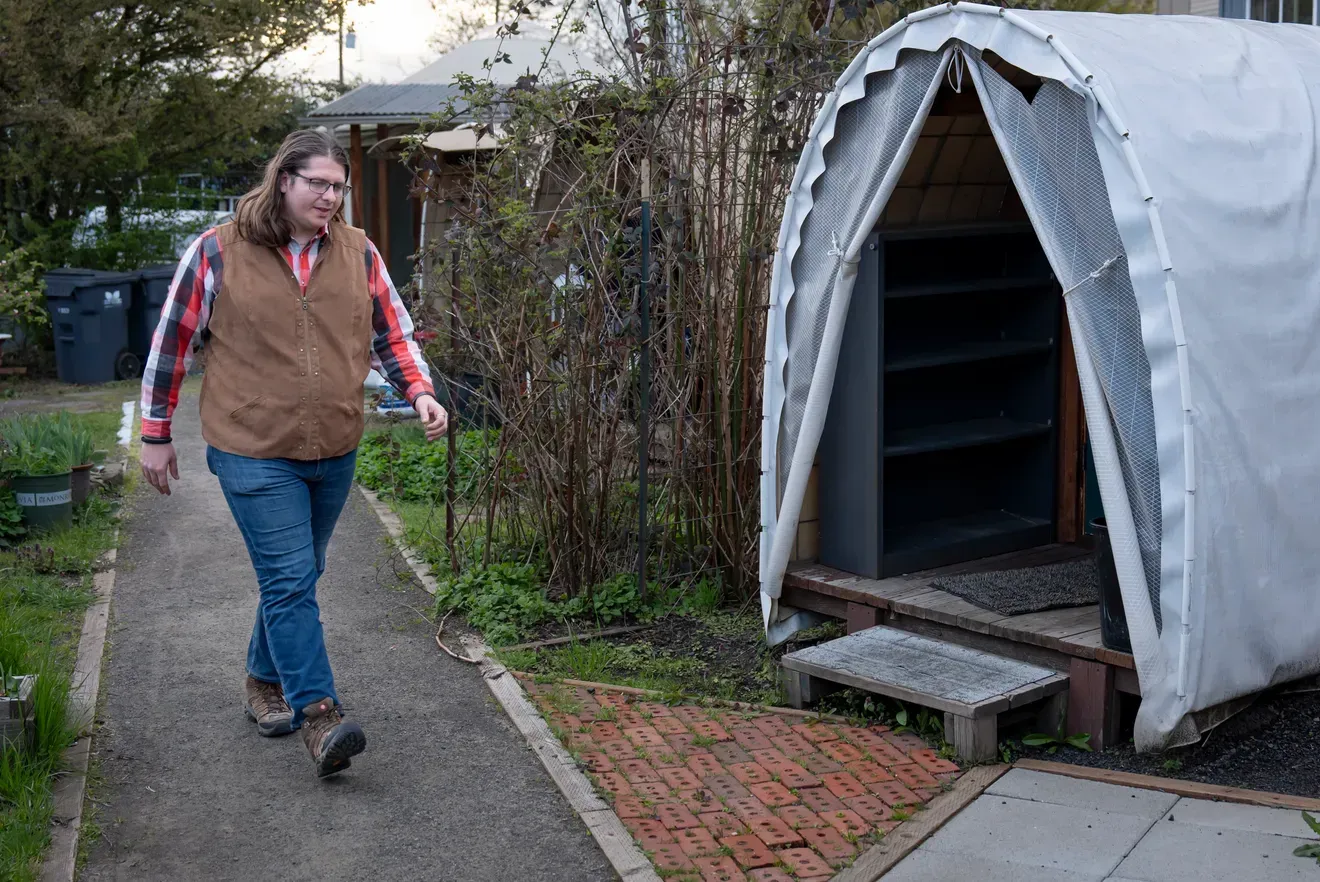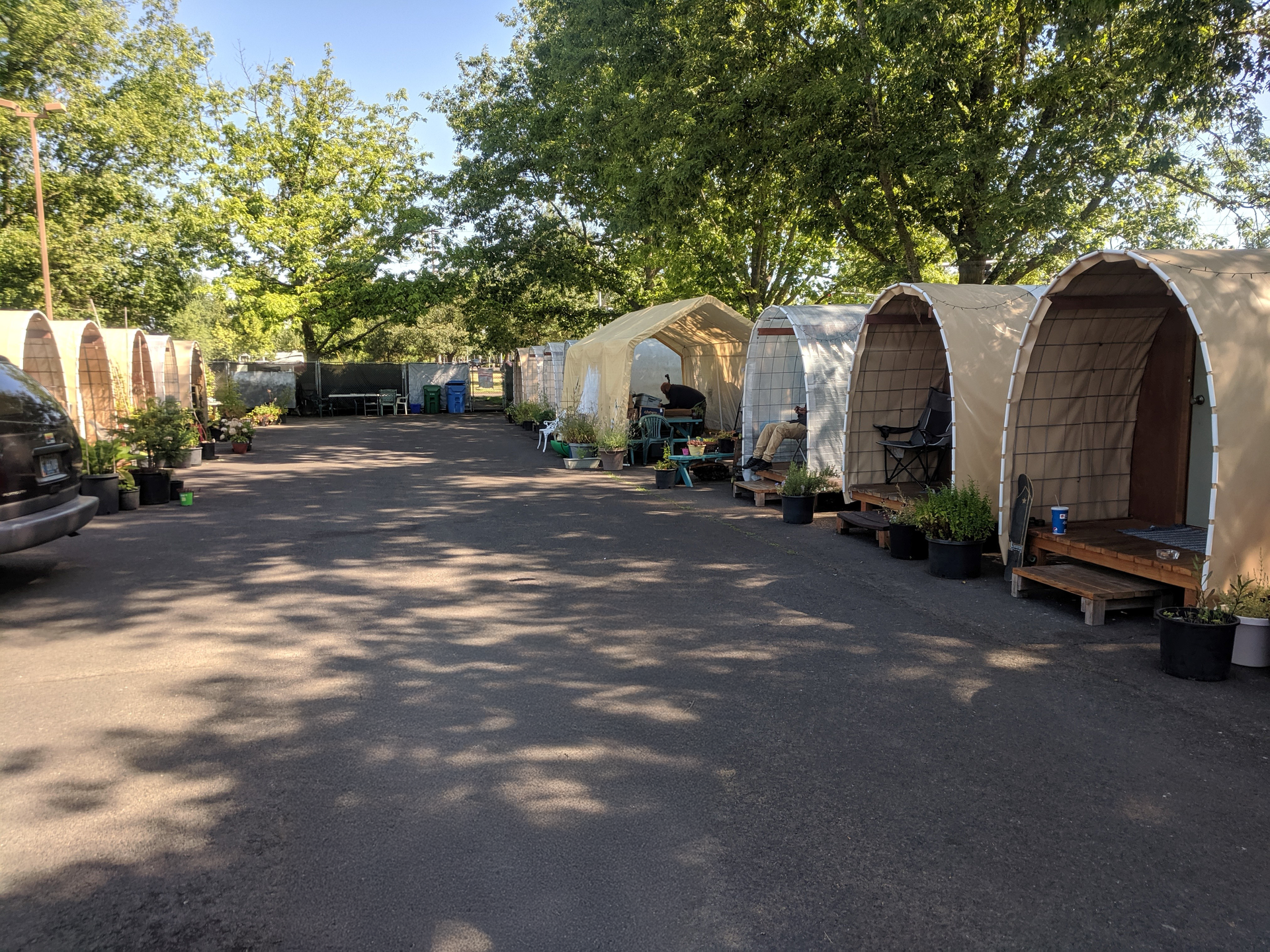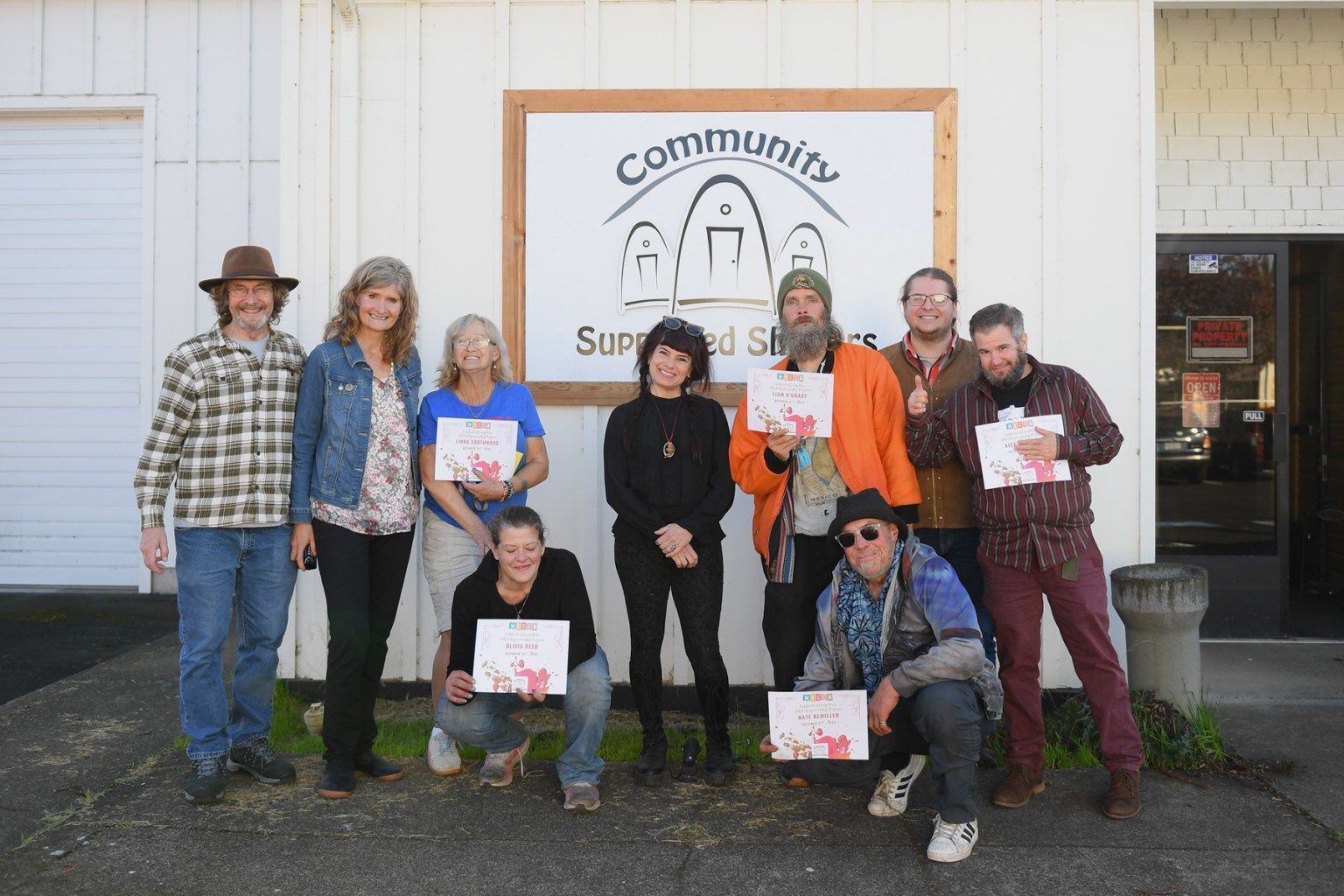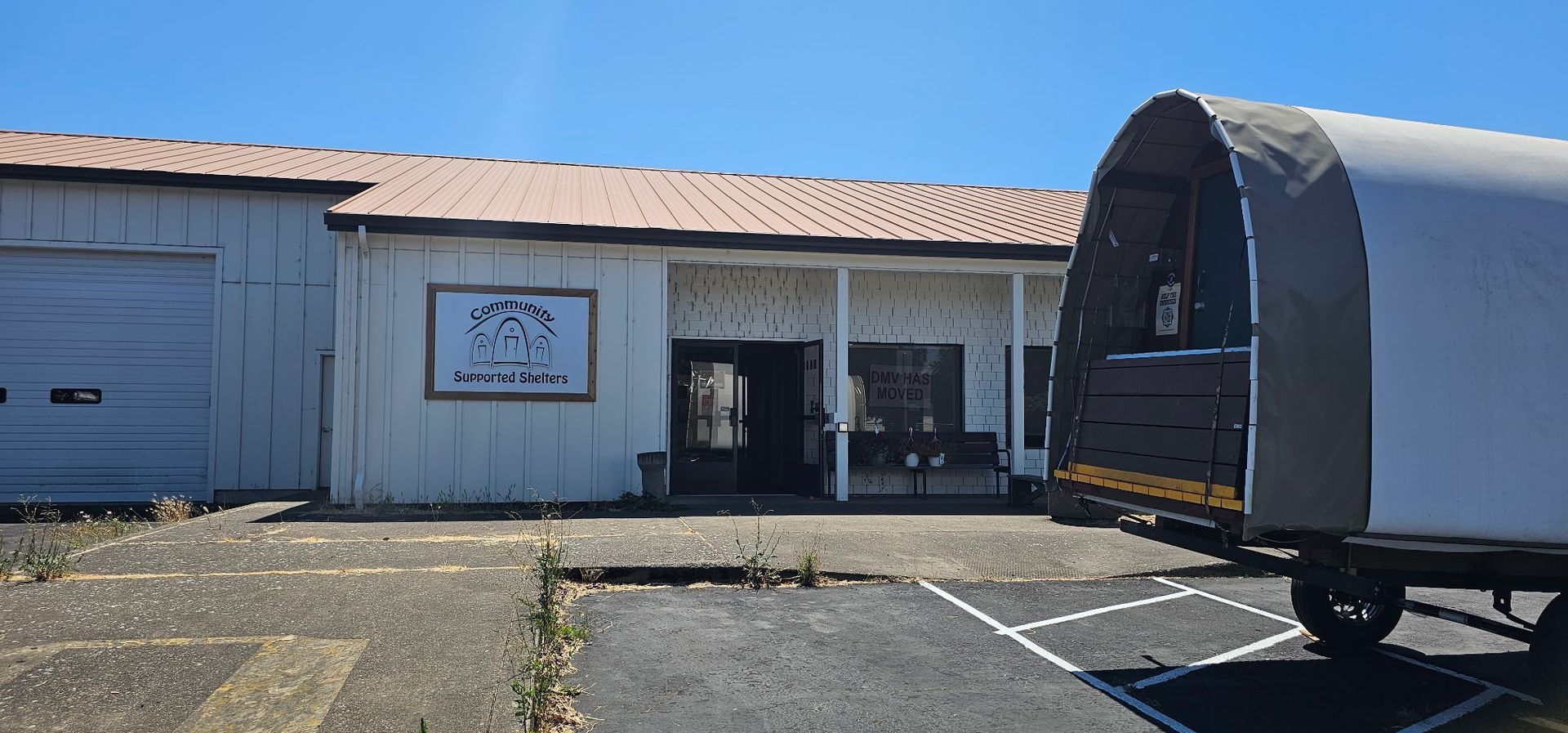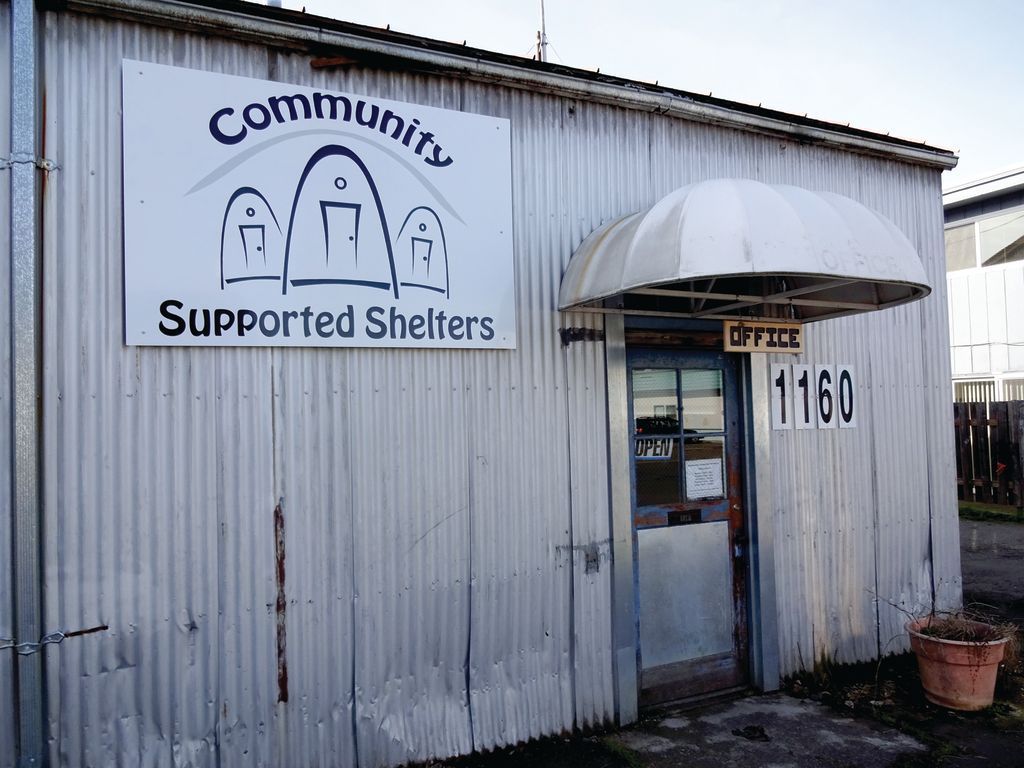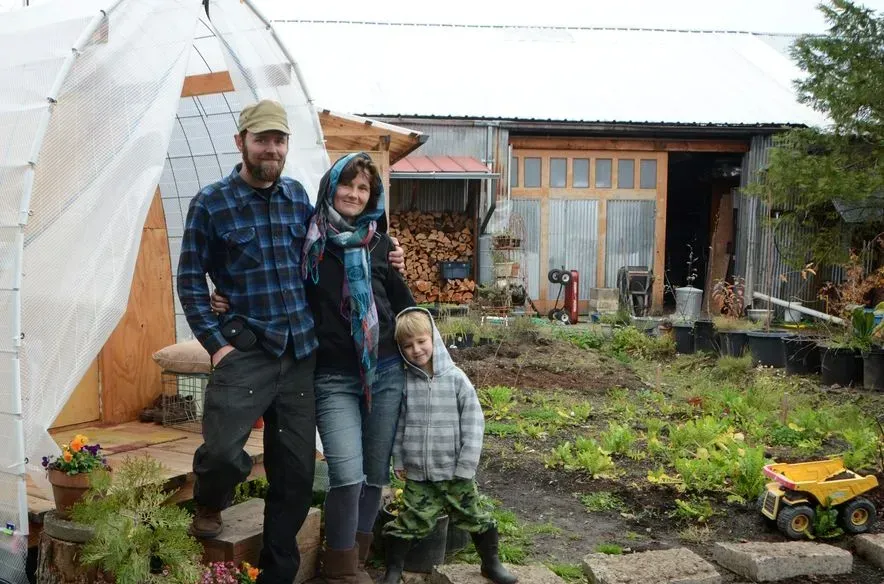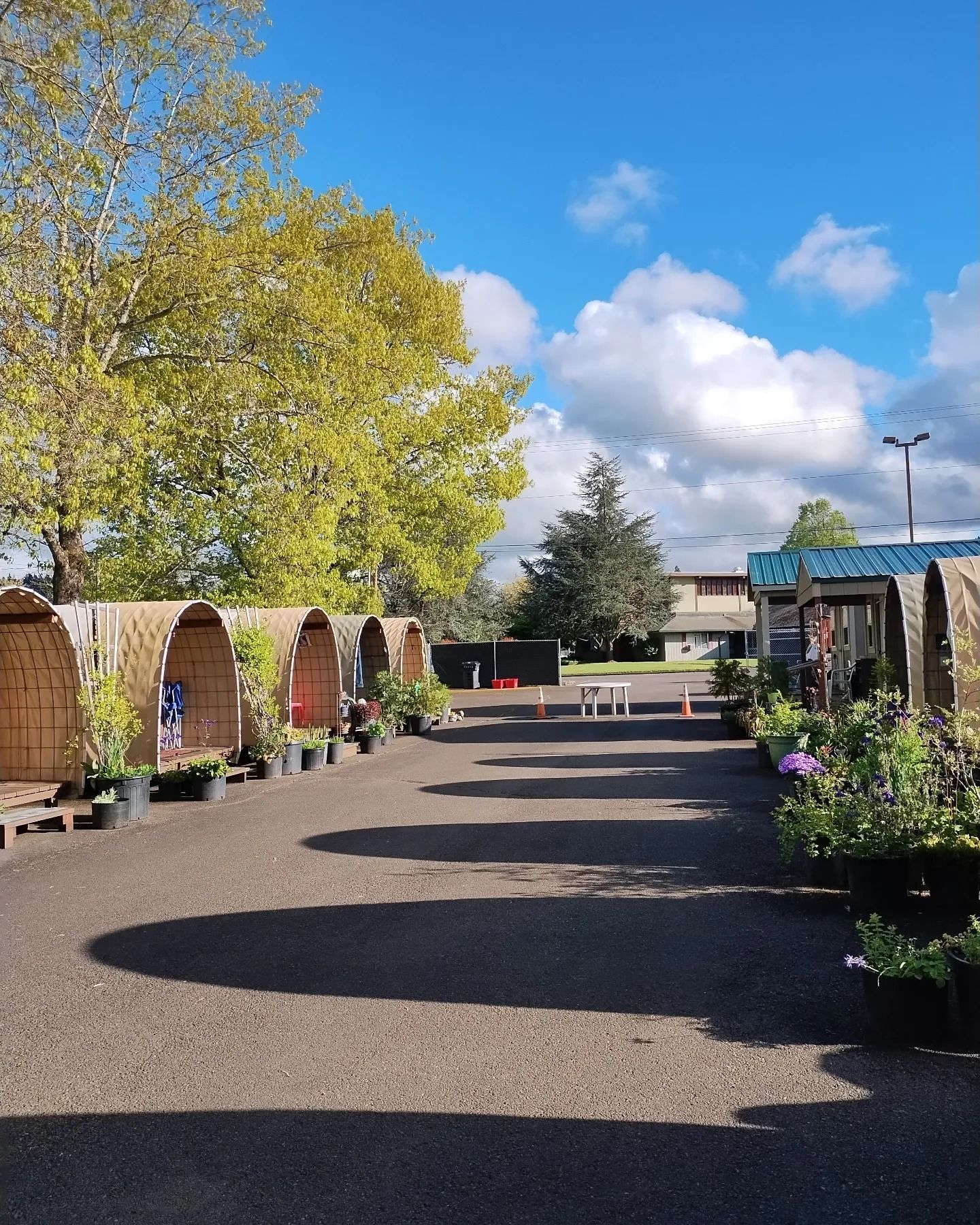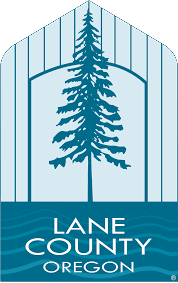Q. What sort of living situations have you experienced before moving into this Hut?
Fay: We met at Maitreya Ecovillage in Eugene, which is a kind of alternative housing reality, an intimate neighborhood.
Erik: We’ve never not lived in a shared-housing situation. So we’ve always been dealing with multiple personalities and trying to make group situations work. Actually how we are living now is probably the least group, shared-living situation that we’ve been in but we do share our living situation because you can’t really take that out of us. We believe in sharing just about everything that we have.
At Maitreya, we quickly moved into an Icosa Hut, a nine-foot diameter circular structure that we were building before we built Conestoga Huts.
Fay: You crawled into it and you couldn’t stand up. Abram was about three months old when we moved in. We moved out when he was about two to a little shack in somebody’s backyard on River Road
Erik: We lived there for several months and then Fay was living in another Icosa Hut down the McKenzie Highway. I was working in town at NextStep Recycling as their marketing manager. I was sleeping in all these random places. It was a really hectic time because our family wasn’t together. It felt like we were just barely holding things together and when we look back we think if somebody had already come up with the Conestoga Huts and had places to put them, that’s the kind of situation where it would have been really helpful for us, but instead we were kind of keeping our lives together with duct tape.
Fay: But through all these situations, we learned a lot about people.
Erik: We learned that community can sometimes be this naïve idealistic thing, that there’s a lot of social behavior that you need to really watch closely when you’re making a community. But, in the meantime, we were holding it together, and having all the different talks that we needed to have with the city, with attorneys and lawyers and all this stuff to reestablish our business.




